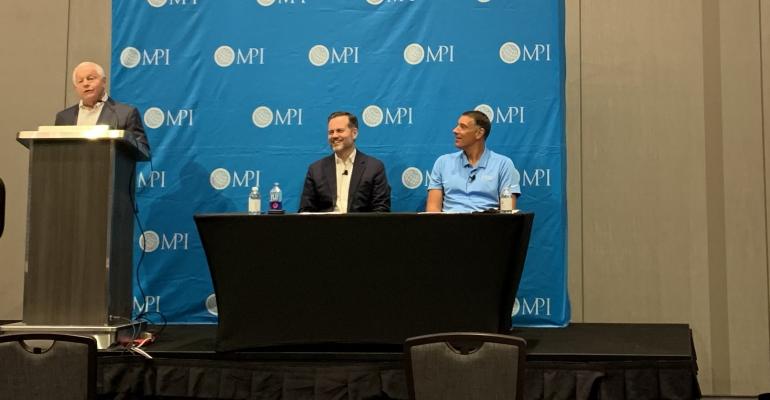To state the obvious: You can’t have a thriving in-person meetings and conference market if companies are restricting travel—or if your attendees aren’t willing to head out on the road.
Trends are largely moving in the right direction, according to a new poll from the Global Business Travel Association. However, the current timeline for group travel’s recovery isn’t fast enough, says Roger Dow, president and CEO the U.S. Travel Association, which has just released a travel spending forecast, conducted by Tourism Economics, and announced a new campaign, “Let’s Meet There.”
First, here are the new GBTA survey numbers, which are derived from 640 responses to a member poll conducted June 7-11:
• Three in four (77 percent) GBTA buyer and procurement members feel employees are ‘somewhat willing’ or ‘very willing’ to travel for business. This is 12 percentage points higher than in the May 2021 poll.
• Forty percent of companies have resumed non-essential domestic business travel, and an additional 8 percent have set a date for domestic travel to resume. The balance has either not decided on a date (25 percent), say they’re waiting to see what happens (18 percent), or aren’t sure (8 percent).
• Just 12 percent of companies have resumed non-essential international business travel, and 5 percent have set a date for that travel to resume. The majority are holding back. They have either not decided on a date (21 percent), are waiting to see what happens (39 percent), or aren’t sure (23 percent).
According to the research from Tourism Economics, domestic group travel, at its current pace, will return to the spending levels of 2019 by 2024. International group travel is predicted to take an additional year to recover. But U.S. Travel wants to speed that recovery. It’s “too long to wait,” Dow said in a U.S. Travel press conference.
“What we need to do is talk about what we can do from an action standpoint to bring back business travel, especially focusing on professionally managed meetings and events. The analysis shows that business travel could be bleak if we don't do something immediate,” said Dow, announcing the “Let's Meet There” campaign, which he called “an initiative to communicate the distinct difference between professionally managed events (PME) and what we call ‘large gatherings.’” The distinction is that PMEs are structured events only open to registered guests, and thus allow for more reliable applications of health and safety measures.
One aim of the campaign will be to drive more consistency around pandemic regulations. “To bring back spending and jobs, we need to bring back business travel,” Dow said. “Right now, we have a problem: We've got a patchwork of reopening protocols from state to state and city to city, so business leaders really don't know what to expect when they go to different destinations.
There is also a lack of clarity around the best protocols for conducting safe meetings and events, Dow said, and for that element of “Let’s Meet There” U.S. Travel is working with The Ohio State University. Bernadette Melnyck, dean of the Ohio State College of Nursing, joined the press conference to review a white paper she co-authored on the issue
Called “The Scientific-Based Evidence for Conducting Safe and Healthy Professional Meetings and Events,” the nine-page paper includes detailed guidance for organizers. In brief, here are six elements of what she calls a “layered approach” to conference safety that will both reduce risk and make attendees and meeting hosts more confident:
• Masks should be worn by all unvaccinated attendees.
• Masks should be encouraged for vaccinated attendees.
• If there are unvaccinated people in attendance, a six-foot physical distancing rule should be adopted.
• If all attendees have provided proof of vaccination, no physical distancing is required.
• The venue’s ventilation system should be evaluated to ensure occupancy does not exceed allowable limits.
• Use pre-packaged meals with low-touch distribution methods





